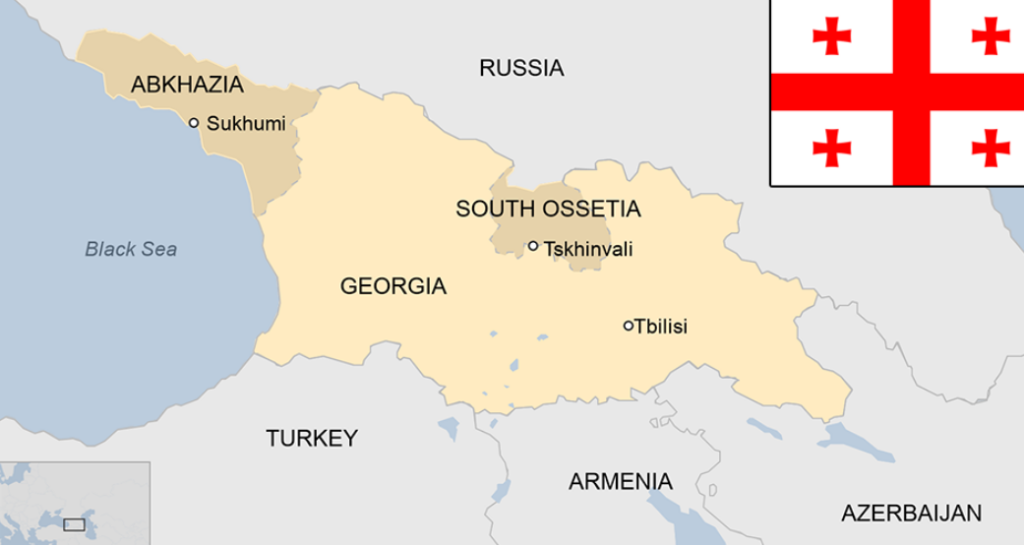7 October 2024 : Daily Current Affairs
1. Muizzu to meet Modi, request India’s support over looming economic crisis
- 1. Muizzu to meet Modi, request India’s support over looming economic crisis
- 2. Scientists are working on a way to detect cancer with sound waves
- 3. Rs 1,000 cr earmarked for Venture Fund to Space StartUps, says union Minister Jitendra Singh
- 4. Trade not just globalised but it’s also now weaponised: Jaishankar
- Prelims Facts:
- 1. 20 years after nuclear deal, New Jersey firm’s proposal for small reactor opens a door
- 2. Inscriptions at 3 T.N. temples copied onto paper by ASI
- 3. Excavations commence at Doddalathur megalithic burial site in Hanur taluk
- 4. Gold: what makes it so desirable?
- 5. A Doukhobor exiled from Russia years ago on the verge of disappearance in Georgia
(Source – The Hindu, International Edition – Page No. – 4)
| Topic: GS2 – International Relations – Bilateral Relations |
| Context |
|

Challenges Faced by Mauritius:
- Economic Crisis: The Maldives is grappling with a significant economic crisis, characterised by rising external debt and a debt-to-GDP ratio of approximately 110%.
- Imminent Debt Repayment: The country is approaching critical debt repayments, including a $25 million payment due for sukuk (Islamic bonds) and a total of $1.5 billion in repayments over the next two years.
- Declining Foreign Exchange Reserves: The Maldives’ foreign exchange reserves have dwindled to about $440 million, further straining the economy and raising concerns about potential default.
- Climate Change: Threats to coastal infrastructure and biodiversity, necessitating urgent adaptation and mitigation strategies.
- Food Security: Increasing reliance on imports for food, affecting self-sufficiency and resilience.
Ways India Can Help Mauritius:
- Currency Swap Arrangement: The Maldives is expected to request a currency swap to ease its financial burden.
- Debt Support: India can provide financial support to help manage imminent debt repayments and maintain economic stability.
- Development Partnerships: Continued collaboration on infrastructure projects and security cooperation can foster long-term economic growth.
- Capacity Building: Training programs for local officials in governance, administration, and disaster management.
- Bilateral Trade: Enhancing trade relations to diversify economic opportunities and reduce dependence on tourism.
| Key Insights from Recent Meeting: |
|
| Practice Question: Discuss the implications of Maldives’ economic challenges on its foreign relations, particularly with India. What role can India play in addressing these challenges, and how might this affect broader geopolitical dynamics in the Indian Ocean region? (250 Words /15 marks) |
2. Scientists are working on a way to detect cancer with sound waves
(Source – The Hindu, International Edition – Page No. – 7)
| Topic: GS3 – Science and Technology |
| Context |
|
Using Sound for Cancer Detection:
- Ultrasound Technology: High-energy ultrasound waves can be employed to break off small droplets of cancerous tissue from tumours, releasing biomolecules into the bloodstream.
- Biomarker Identification: These droplets contain genetic material (RNA, DNA) and proteins that serve as biomarkers for cancer, allowing scientists to detect specific cancer types and mutations.
- Enhanced Detection: The ultrasound technique can increase the concentration of biomarkers in blood samples by over 100 times, significantly improving the chances of early detection.
- Non-Invasive Approach: This method offers a less painful alternative to traditional biopsies, minimising patient discomfort while still providing valuable diagnostic information.
Challenges Faced by Scientists:
- Low Sensitivity: Detecting circulating cancer cells in the bloodstream is difficult due to their low numbers, requiring highly sensitive methods for accurate identification.
- Cost and Accessibility: Many existing tests, such as the CellSearch test, are expensive, limiting their accessibility to patients.
- Need for Comprehensive Trials: Large-scale clinical trials involving diverse populations are essential to ensure that the technique is effective across different cancer types and demographics.
Recent Advancements:
- Successful Single Cell Detection: Researchers have successfully detected a single prostate cancer cell in blood samples using the ultrasound method, demonstrating its potential effectiveness.
- Cost-Effective Testing: The new ultrasound-based technique is expected to reduce testing costs to around $100, making cancer detection more affordable and accessible.
- Broader Applications in Cancer: Ongoing research aims to expand the technique to detect other cancer types, such as breast cancer and melanoma, enhancing its utility in oncology.
| Practice Question: Discuss the potential implications of using ultrasound technology for cancer detection. How does this advancement address the challenges associated with traditional biopsy methods, and what are the key challenges in implementing this technique in clinical settings? (150 Words /10 marks) |
3. Rs 1,000 cr earmarked for Venture Fund to Space StartUps, says union Minister Jitendra Singh
(Source – https://pib.gov.in/PressReleseDetail.aspx?PRID=2062671®=3&lang=1 )
| Topic: GS3 – Indian Economy |
| Context |
|
Steps Taken by the Government
- Opening Space Sector to Private Players: Initiated four years ago, allowing private participation, leading to the establishment of New India Space Limited (NISL) and IN-SPACe India as a regulatory interface.
- 100% Foreign Direct Investment (FDI): This provision has boosted entrepreneurial initiatives, attracting global investment into the Indian space ecosystem.
- Venture Fund Allocation: A Rupees 1,000 crore fund has been earmarked for space StartUps, promoting innovation and growth.
- Upcoming Gaganyaan Mission: The final test flight with Vyom Mitra is planned for late 2024, paving the way for sending the first Indian human to space in 2025.
Results
- Increase in Space StartUps: The number of StartUps in the space sector surged from 1 to over 200, showcasing significant growth and interest.
- The Startup Surge: The number of startups in India has surged from 350 in 2014 to over 150,000, positioning the country as the third-largest startup ecosystem globally.
- Technological Advancements: The successful launch of Chandrayaan-3, reaching the Moon’s South Pole, positions India as a leader in space exploration.
- Contribution to Economy: Space StartUps are expected to play a vital role in enhancing India’s economic prospects, contributing to the transition from the “fragile five” to being among the “first five” economies.
- Broader Impact of Space Technology: Applications extend beyond launches to sectors like agriculture, urban development, healthcare, and infrastructure, enriching the lives of citizens.
| Practice Question: Discuss the implications of allowing 100% foreign direct investment in India’s space sector and its potential impact on the growth of space startups. How can these developments contribute to India’s strategic objectives in space exploration? (150 Words /10 marks) |
4. Trade not just globalised but it’s also now weaponised: Jaishankar
(Source: Indian Express; Section: Economy; Page: 15)
| Topic: GS3 – Indian Economy |
| Context: |
|
Analysis of News:
Important Points Discussed
- Globalization’s Impact: Globalization has led to job losses and dissatisfaction with quality of life in many societies over the past 25 years.
- Rising Protectionism: Protectionist measures are increasing in India and the West in response to China’s surge in imports, particularly in crucial sectors.
- Weaponization of Trade: Trade has become weaponized, leading countries to take defensive measures and prioritize national security over economic efficiency.
- IMEC and MDB Reforms: Conflicts in Ukraine and West Asia have diverted attention from critical issues like MDB reforms and climate change.
- India’s Stance: India has imposed over 30 anti-dumping measures against China in 2024, citing China’s predatory methods to eliminate competition.
Challenges:
- Job Losses: Globalization has resulted in significant job losses worldwide.
- National Security: Countries prioritize national security over economic efficiency.
- Climate Change: Climate change has dropped in importance due to other global priorities.
Way forward:
Regional Collaboration: Strengthening partnerships between MDBs and local public banks can mobilize resources for national-level investments.
IMEC Development: India is expecting the development of the India-Middle East-Europe Economic Corridor to accelerate faster.
MDB Reforms: Reforms in Multilateral Development Banks can address global challenges.
Prelims Facts:
1. 20 years after nuclear deal, New Jersey firm’s proposal for small reactor opens a door
| Context: |
|
Analysis of the News:
SMR-300 Features:
- The reactor produces 300 megawatts of electric power,
- uses low-enriched uranium fuel,
- and can operate on a relatively small land area, making it an attractive option for India’s clean energy goals.
Significance:
- Diplomatic Outreach: The partnership demonstrates India’s ability to forge strategic partnerships, enhancing its global reputation.
- Technological Advancement: Collaborating on SMR technology will drive innovation, improving India’s nuclear capabilities.
- Economic Benefits: The partnership promises significant economic benefits, including job creation, investment, and infrastructure development.
Implications:
- Manufacturing Partnership: Holtec plans to double its workforce in Gujarat if manufacturing plans are cleared, showcasing the potential for job creation and economic growth.
- Technical Discussions: India’s Department of Atomic Energy is exploring the feasibility of deploying SMR-300 reactors, paving the way for large-scale adoption.
- Global Leadership: India and the US aim to counter China’s growing influence in the SMR market, promoting a balance of power in the global nuclear industry.
- Clean Energy Transition: The partnership supports India’s commitment to clean energy, reducing carbon emissions and promoting sustainable development.
By revitalizing their nuclear cooperation through Holtec’s SMR-300 technology, India and the US can strengthen their strategic partnership, promote clean energy, and enhance global competitiveness.
2. Inscriptions at 3 T.N. temples copied onto paper by ASI
(Source – The Hindu, International Edition – Page No. – 2)
| Context |
|
Analysis of the news:
- Inscriptions were found at Nambi Rayar, Thirumalai Nambi, and Aniliswarar temples in Thirukurungudi.
- A Pandya period inscription, in Vattezhuthu and Tamil, mentions a donation of 50 sheep for ghee to light perpetual lamps in Aniliswarar Temple.
- Another inscription at Nambi Rayar Temple records a tax-free land donation during the Vijayanagara reign, specifying land boundaries.

- These inscriptions offer insights into temple rituals and donations, reflecting socio-religious practices of the time.
- Some inscriptions were partially damaged, making identification of specific donors and the reigns challenging.
- The inscriptions were copied onto maplitho paper using the estampage method by ASI’s P. Balamurugan.
- These findings will contribute to further studies and be published in the Archaeological Survey of India’s annual report.
3. Excavations commence at Doddalathur megalithic burial site in Hanur taluk
(Source – The Hindu, International Edition – Page No. – 3)
| Context |
|
Analysis of the news:
- The site is located in a small valley formed by the Male Mahadeshwara Hill ranges
- The burial site dates back to the megalithic period, also known as the Iron Age, between 1200 BC and 300 CE

- Burials are characterised by circles made of large boulders, typical of megalithic culture
- The site was discovered by C. Krishnamurti of the Archaeological Survey of India in 1961
- It once had over 1,000 burials, though many have been lost to agricultural and development activities
- Despite disturbances, many burials remain intact and hold potential for further excavation
- The excavation aims to understand the region’s megalithic culture and train archaeology students in fieldwork
| What are megaliths? |
|
4. Gold: what makes it so desirable?
(Source – The Hindu, International Edition – Page No. – 7)
| Context |
|
What makes gold so desirable?
- Gold is highly valued for its aesthetic appeal, making it a popular choice for jewellery and adornments.
- It has excellent corrosion resistance, ensuring longevity and durability in various applications.
- Gold is malleable and ductile, allowing it to be shaped into intricate designs and thin sheets.
- Its conductive properties make gold an ideal material for electrical connectors and components in electronic devices.
- Gold does not tarnish or oxidise, maintaining its lustre over time.
- As a stable store of value, gold is often used as an investment hedge against inflation and economic instability.
- The scarcity of gold, coupled with its historical significance as currency, enhances its desirability.
- Gold is used in various industrial applications, including electronics, medicine, and aerospace, due to its unique properties.
- Cultural significance and symbolism associated with wealth and status further contribute to its desirability.
5. A Doukhobor exiled from Russia years ago on the verge of disappearance in Georgia
(Source – The Hindu, International Edition – Page No. – 15)
| Context |
|

Doukhobor Community:
- The Doukhobors are a spiritual community originating in Russia during the 18th century, known for their pacifist beliefs and rejection of the Orthodox Church.
- They believe in communal living, nonviolence, and a direct relationship with God, which they express through prayer and hymns without formal rituals.
- Their ancestors faced persecution for refusing military service and were expelled from mainstream society, leading them to establish tight-knit communities.
- In the mid-19th century, about 5,000 Doukhobors emigrated to Canada to escape oppression, where they continue to thrive while maintaining their cultural identity.
- The community historically practised agriculture and collective farming, excelling in food production during the Soviet era.
- Today, the Doukhobor population in Georgia has dwindled to about 100 individuals, who struggle to preserve their traditions and heritage amidst demographic changes.
- Younger generations feel the urgency to learn traditional customs as assimilation pressures increase in surrounding societies.

